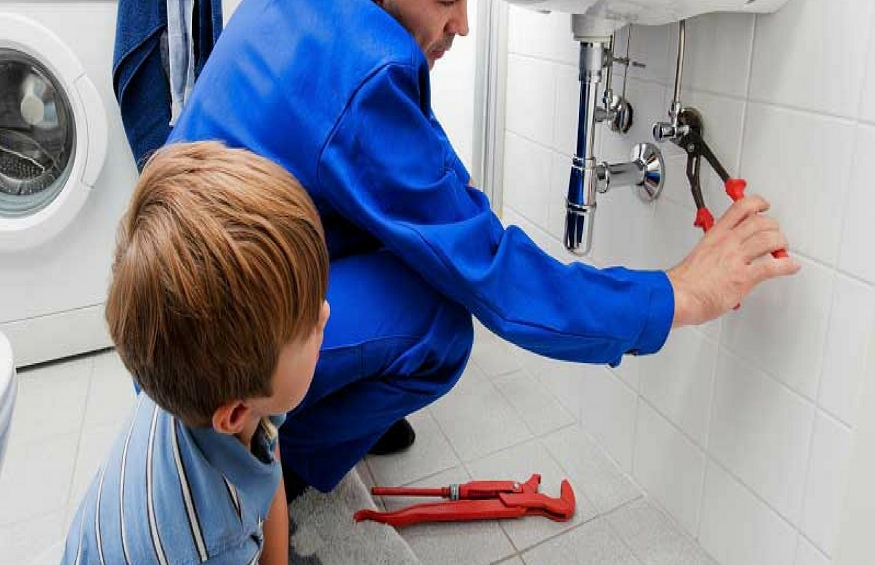Do you want to enjoy a well-heated house as winter approaches? Cold days are fast approaching and the heating is slowly turning on in the rooms of your home.
Is your radiator not heating? How do you know if a radiator is working properly? Why does a radiator not heat up over its entire surface? If you find that your radiator or all of your radiators are not heating, producing no heat, or your radiator is lukewarm, producing heat at the bottom but not at the top, take a quick look. .
Your Europe Sanitaire Heating experts suggest 4 actions to take in order to identify the problem with your radiator.
STEP 1: OBSERVE WHERE THE PROBLEM IS COMING FROM
The origin of the problem may come from a radiator or from all of your radiators. If it’s just one heatsink, then the problem is with that device. If, on the other hand, all the radiators are affected, the problem may be with the boiler or with all the appliances.
HOW DO I KNOW IF THE HEATER IS WORKING?
A radiator can malfunction if it is lukewarm, cold or if the heating surface is uneven when you turn it on.
WHY DO SOME RADIATORS NOT HEAT UP?
Your radiators may not work if the annual maintenance, i.e. the bleeding of the radiators has not been carried out, or if the radiator valves malfunction. In the event that the various steps proposed by your Europe Sanitaire Heating experts do not allow the problem to be correctly identified, a change of your appliances may be necessary .
STEP 2: CHECK BOILER PRESSURE
central heating boiler pressure
Insufficient pressure can explain that one or more radiators produce little or no heat. If the pressure is insufficient, the water will not have a strong enough flow to supply all the radiators in your home.
First, make sure your boiler is properly started. Then check that the pressure of your boiler is at the right level, that is to say between 1 and 1.5 bar.
This step is relatively easy, just check the pressure gauge. This small round device is located on the surface of your boiler or on the pipes of the latter. If the small needle is well between 1 and 1.5 bar, everything is fine.
If the pressure is less than 1 bar, introduce water into the central heating circuit.
If the pressure is still incorrect, the problem may be a leak, a deflated expansion tank, a damaged valve or a blocked or broken pump. In this case, the intervention of a professional is necessary.
STEP 3: UNSCREW AND CHECK YOUR THERMOSTATIC VALVE
Once the piece is unlocked, you can put the faucet back in place.
thermostatic radiator valve
A water radiator can be fitted with a thermostatic valve . This device automatically regulates the water in the radiator in order to precisely control the temperature of each radiator in your home.
When your radiator is lukewarm, it may mean that the requested temperature has been reached. However, if this request is not respected, it may be a malfunction of the thermostatic valve.
First, cut off the hot and cold water supply, then unscrew the tap by turning the ring that connects the tap to the radiator pipe.
Normally you will come across a small steel rod in the center of the pipe. This little tab on the thermostat is connected to a spring that turns the faucet on and off. It is possible that it is blocked. Tap lightly on the sides, top and bottom. Be careful not to take it out, because putting it back is a fairly complex manipulation.
STEP 4: PURGE YOUR RADIATOR
You notice that only one of your radiators is not heating and that it is cold to the touch. If this malfunction only concerns one radiator, then this problem only comes from this device. Your radiator may also not be producing heat evenly, so purging the unit is necessary.
WHY IS MY RADIATOR NOT HEATING EVENLY AND BEING COLD AT THE BOTTOM?
bleed central heating radiator
As the years pass, and after many uses of your radiator, small air bubbles are introduced into the circuit of your heating. These bubbles accumulate and lead to noisy pipes, increased gas consumption and slow performance of your heater.
Your Europe Sanitaire Heating experts advise you to bleed the radiator in this case. For this, equip yourself with gloves and protect your floor with a small basin. Then, open very slightly, using a screwdriver, the bleed screw. If water leaks out , close the screw. This means that purging is not necessary.
If so, you will need to bleed your radiator .
Once the purge has been carried out, make sure that your boiler maintains a good level of pressure, i.e. between 1 and 1.5 bars .
Like the air bubbles that accumulate in your radiator circuit, over the years, mud builds up to prevent your radiators from heating properly.
The process being complex, you will need to contact a professional. The latter will inject a sludge removal product into your network or use a specific sludge removal machine.




